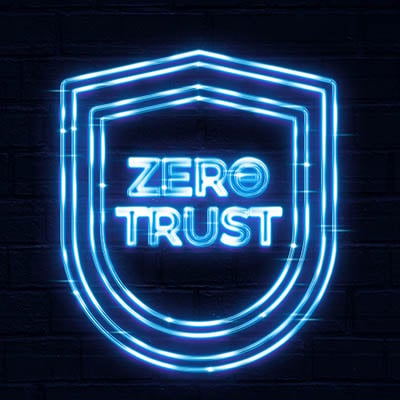What is Zero-Trust, and How Can My Business Achieve It?

Let me ask you something: would you trust a bank that locked its doors for the night but left all its cash in a big pile in the middle of the floor? Probably not—after all, if someone managed to get through the doors, nothing would stop them from helping themselves to the funds inside.
This is effectively how cybersecurity once worked, with the presumption that if someone had access to a network, they had permission to access any data on it. Fortunately, many businesses have made the switch to a better approach, known as zero-trust security.
Let’s explore the concept of zero-trust security and the seven factors that contribute to it.
What Does Zero-Trust Security Consist Of?
Zero-trust security effectively boils down to a consistent need for verification.
Let’s return to our bank analogy for a moment. Obviously, a scenario where a bank’s money is all left stacked in the lobby and only protected by the exterior doors is ridiculous because we instinctively know it isn’t secure. I don’t know about you, but I certainly couldn’t entrust my finances to an institution that treated them so frivolously.
However, businesses everywhere do the same with their data, as all it takes to access it is for someone to gain access to their network.
However, if our bank locked the doors and squirreled all money away in a central vault that required a few different proofs of identity to open and was protected behind a few locked interior doors, it would be far more secure. This is because the bank’s security wouldn’t be wholly dependent on someone simply not getting into the building… there would be more checks on the inside to catch those without authorization.
This is effectively how the zero-trust security model works. Rather than trusting anything that gains access to a business’ network, a zero-trust approach assumes that nothing should be trusted and repeatedly prompts everything trying to navigate around the network to confirm its identity.
What Do I Need to Follow a Zero-Trust Approach?
Seven interconnecting elements—referred to as pillars—need to be considered to implement zero-trust security properly. These pillars are as follows:
Users
In short, you need to know who is accessing your network and that they have the permissions to see what they need to see to fulfill their roles… whether they are accessing your network from your business’ location or doing so remotely. This means that you need to have a variety of identity governance tools in place, including the likes of multi-factor authentication and single sign-on, that enforce the principle of least privilege—where each user gets the minimum permissions required to complete their tasks—to limit the damage that a compromised account can cause.
Devices
If not adequately protected, every piece of hardware your business relies on—from workstations to mobile devices—is another vulnerability an attacker can exploit to undermine your security. This means that these devices must be closely and continuously monitored for updates and available patches. Each device must also be positively identified and authenticated before it can connect to the network, upholding the companywide policies you put in place.
Networks/Environments
Returning to the principle of least privilege for a moment, it also makes sense to lock down different parts of your network to only those users who need to access them for their roles. This helps to minimize the damage that any one account can lead to if it is breached. Of course, your network security also needs to be reinforced through safeguards like firewalls, intrusion detection systems, and the liberal use of virtual private networks.
Applications/Workloads
As with your hardware, your business’ software solutions must also be maintained to remain functional and secure. Threats like shadow IT (applications, programs, and, yes, sometimes hardware that has been implemented in the workplace without the green light from IT) can easily lead to issues. Therefore, application whitelisting—where you limit the applications that can be installed to a predetermined selection—and regularly evaluating your software for vulnerabilities are necessary for zero-trust implementation.
Data
Your business’ data is its lifeblood, making its security a non-negotiable part of your process, whether it’s sitting in your digital storage or being transmitted across the Internet. The key here is to have it encrypted and protected by stringent access controls, while also tracking who is attempting to access it.
Automation
Automation can also make your security processes and protections more efficient and effective. This allows you to keep a watchful, digital eye over your network, which alerts you when a potential threat is identified much sooner than an unassisted employee could. As a result, your capability for incident response is boosted significantly.
Analytics/Visibility
We’ve mentioned monitoring a few times now, largely to reinforce how important it is for catching threats in the moment. Monitoring also allows you to collect historical data that further enhances your ability to deter threats. Collecting these analytics can help you identify the warning signs of impending threats more easily, giving you the opportunity to deal with these threats proactively.
We’re Here to Help Secure Your Business and Its Workflow
At White Mountain IT Services, our expertise doesn’t stop at setting up and maintaining effective IT infrastructures. We also focus on ensuring that you remain secure throughout your operations. Learn more about what we can do for you by calling (603) 889-0800 today.


